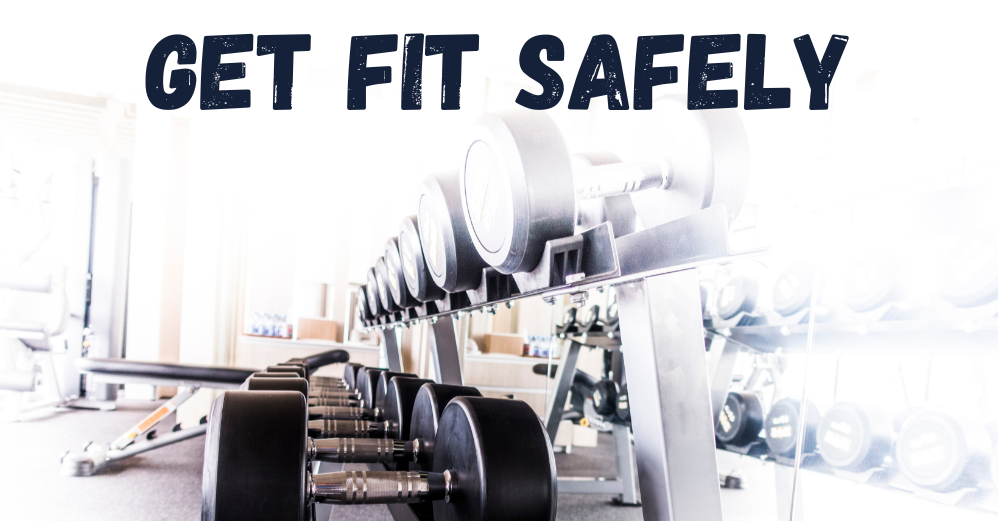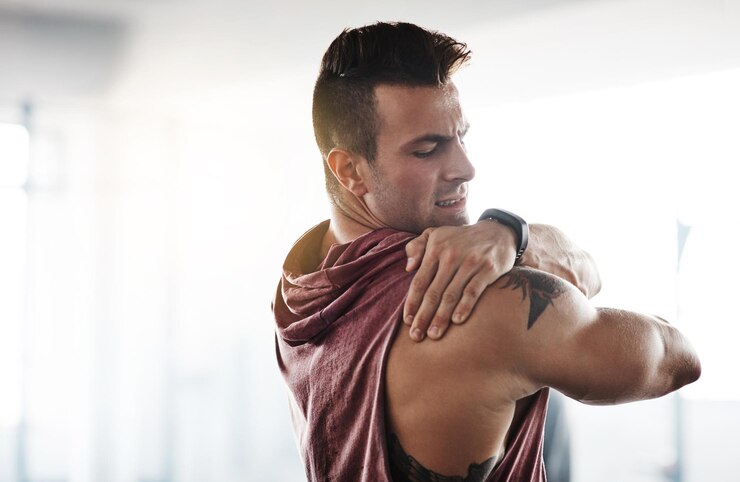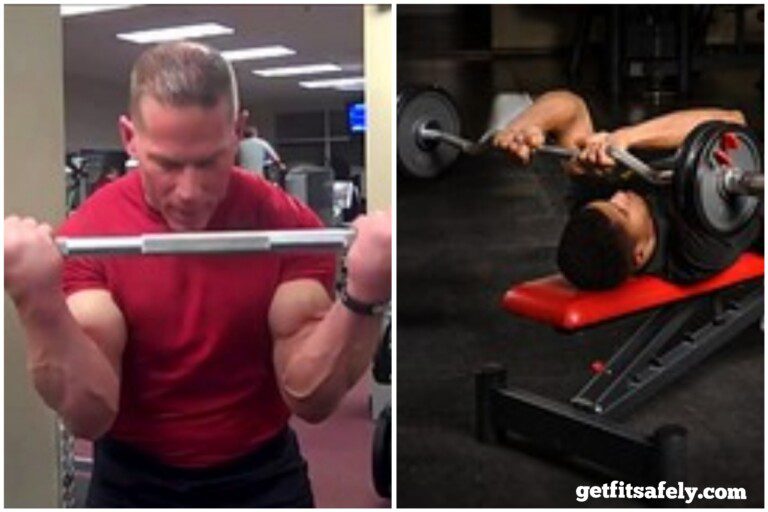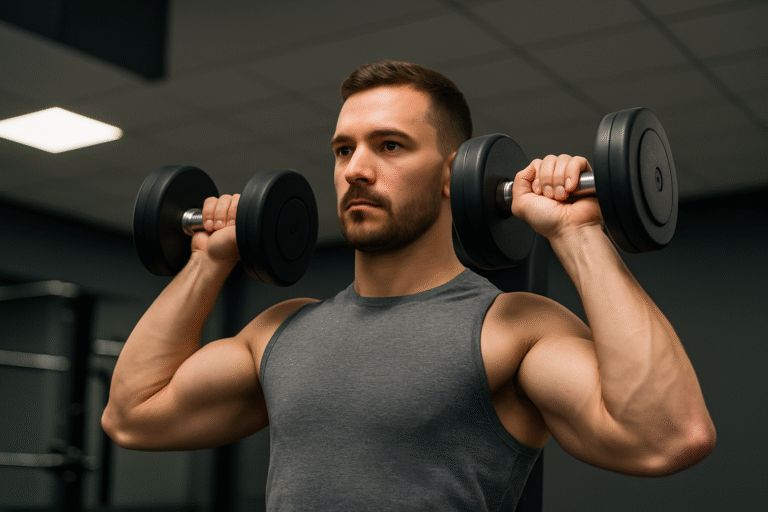There was a time I’d look in the mirror and think, “Okay, arms look decent, some veins showing, chest’s not bad…”
Then I’d turn to the side.
And that’s when the illusion crumbled.
The shoulder… disappeared.
No roundness, no width.
I’d see people with wide, boulder shoulders, looking jacked even in pajamas.
Maybe it sounds familiar. There’s always that friend who did three dumbbell presses in high school and has had cannonball delts ever since.
I wasn’t that guy.
And if you’re reading this, maybe you aren’t either.
For us, broad shoulders are earned with sweat.
For years I asked myself:
“Is it genetics, or am I doing something wrong in the gym?”
Answer: a bit of both—but mostly I was doing it wrong.
Genetics plays a role, sure.
Some people have wide clavicles and muscles that grow just by looking at weights.
But we often use genetics as an excuse.
I did.
“My shoulders are narrow.”
“My delt doesn’t grow.”
“My traps do all the work.”
Meanwhile, I kept pressing heavier and heavier overhead… thinking more weight = more gains.
Spoiler: nope.
If your shoulders are flat, overhead presses won’t save you

This tiny muscle, squeezed between the front and rear delts, is a real pain in the ass.
It only activates when it feels like it.
Whenever it can, it delegates the job to traps, triceps, or even abs—anything to avoid working.
And if you don’t force it to do its damn job, it’ll never grow.
Here’s where I turned things around:
I stopped chasing the perfect exercise and started perfecting execution.
Lateral raises with 20 kg per arm are useless if you look like a panicking penguin.
Now I use light weights—6 to 10 kg max.
I sit down, lean slightly forward, and go surgical with technique:
- Elbows slightly bent
- Wrists locked
- Controlled movement
- Slow raise to shoulder height
- One-second pause
- Even slower descent
Every single rep should burn.
If you’re not feeling fire in the middle of your shoulder after 8–10 reps, you’re not hitting the right spot.
It doesn’t matter if you’re lifting a dumbbell or a water bottle: form is king.
The right exercise isn’t enough: frequency matters
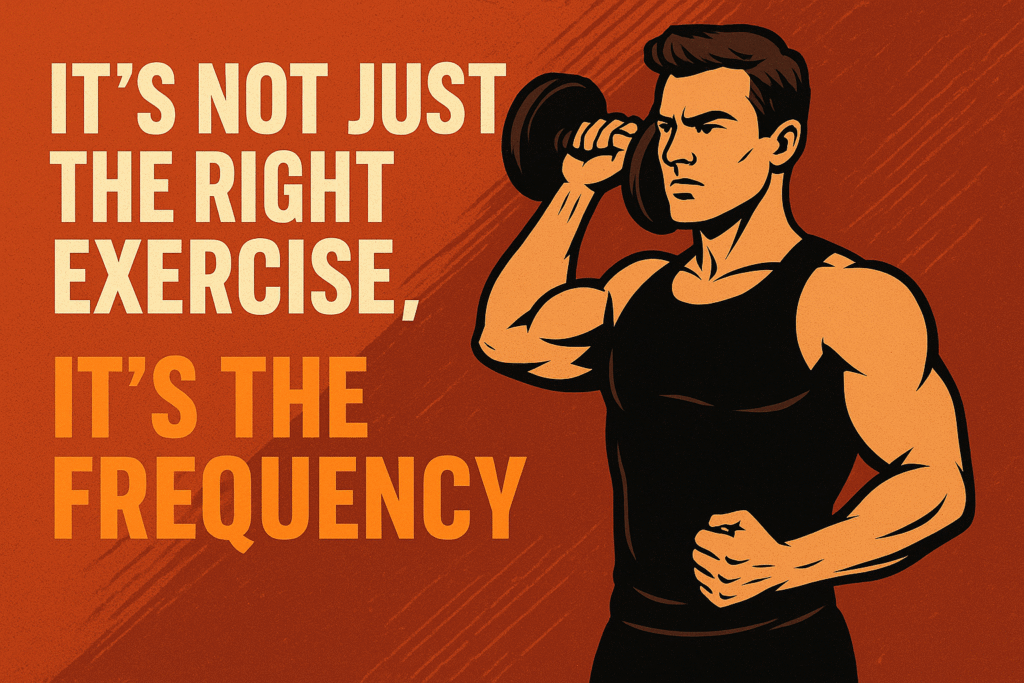
Training shoulders once a week is delt suicide.
If your delts are lazy, hitting them once a week won’t cut it.
I started hitting them three times per week.
Not always with heavy lifts—often, the opposite.
Here’s a sample lateral delt-focused week:
Day 1 – “Technique” session:
- Slow lateral raises 4×12–15
- 45° raises with light dumbbells 3×15
- Superset with bands and isometric pauses
Day 3 – “Volume” session:
- Standing lateral raises with drop sets 4×12+12+12
- Incline bench raises 3×15
- 90° face pulls 3×20
Day 5 – “Explosive” session:
- Lateral raises with medium weights 4×10 (tempo 1-0-2)
- Seated dumbbell front press 3×10
- Slow-tempo band raises 3×25
Three different stimuli, three angles, three strategies.
And most importantly: no boredom.
How to Actually Make Your Side Delts Work (Without Traps and Triceps Stealing the Show)
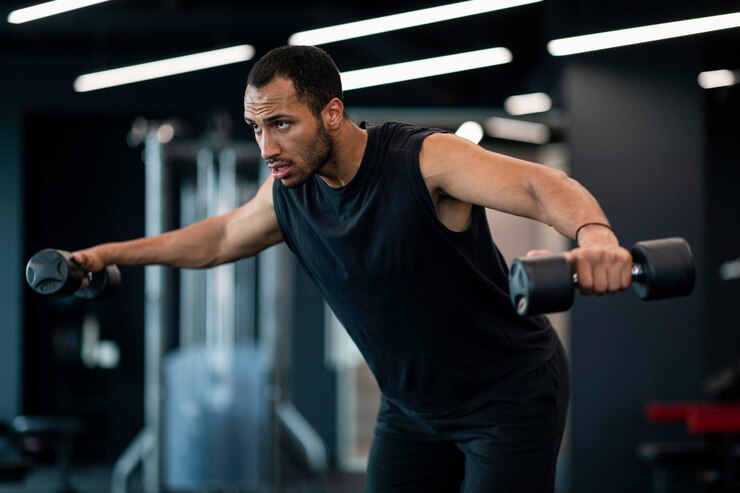
Whenever shoulders come up, you always hear “feel the muscle working” like it’s the ultimate secret.
And maybe you’re thinking:
“Yeah, yeah, I’ve heard this a million times… but I still feel my traps and triceps, not my side delts!”
Perfect. Let’s break it down into clear, practical tricks.
Forget influencer fluff.
Here’s what actually worked for me to get those damn delts to activate during lateral raises:
1. Lift with your elbow, not your hand
The most common (and sneakiest) mistake is trying to “lift the dumbbell.”
Wrong.
Your mind should command your elbow:
“Go up and out—like you’re busting through an invisible door with your elbow.”
The dumbbell just follows. It’s not the star here.
Picture pouring water from a jug—with your elbow leading the pour.
That one change flips everything.
2. Thumb down—but don’t airplane it
Yes, the classic “pour the wine” tip works.
But don’t overdo it.
If you internally rotate too much, you’ll just wreck your rotator cuff.
The trick is a slight thumb-down angle—not an exaggerated twist.
Also, lean slightly forward with a neutral torso.
That helps target the side delts way better.
3. Trap-proof with a sneaky setup
Traps are like that coworker who tries to do everyone’s job.
As soon as they sense shoulder work, they jump in.
Here’s how to block them:
- Before starting, pull your shoulders down and imagine jamming your elbows into your back pockets
- Hold that “resting tension” during the entire raise
Basically, you’re pre-activating a depressive force (sounds bad, but it’s a technical win).
Or, try seated raises on a 45° incline bench with chest support—traps can’t rise much in that setup.
4. Use an isometric pause halfway up
Try this in your next set:
- Raise your arm to halfway (parallel to floor)
- Freeze for 2 seconds
- Continue slowly to the top
- Lower over 3–4 seconds
This stops “parasite muscles” and keeps the side delt under tension.
It works great at the end of a set when your form is about to collapse.
5. Change tools: bands, cables, machines
Don’t just use dumbbells.
- Cables = continuous tension
- Bands = max resistance where delts are strongest
- Machines = help isolate and improve movement efficiency
Even if you’re a free-weight purist, rotating tools saves your workouts.
6. Learn to “warm up” the side delt first
Yeah, we all warm up.
But if your traps are already lit from presses and your side delts are cold, you’ve already lost.
Try this mini warm-up protocol before real sets:
- 2 slow banded lateral raise sets, 20 reps
- 1 set of 15 reps with straight arm, no weight
- 1 isometric set with light weight, 10 seconds at mid height
By the time you hit the real work, your delts are primed and ready to go.
Other common mistakes that waste months of progress
- Using torso momentum: your core works, your delt naps
- Always standing: try seated, inclined, even lying down to change the focus
- Not eating enough: no calorie surplus, no growth—period
- Skipping sleep: muscles grow in bed, not in the gym
Do delts respond better to high reps?
Surprise: yes… but it depends
Side delts are small, but tough.
They’re involved in most daily arm movements—carrying bags, reaching overhead, even opening your car trunk.
So they’re used to frequent work.
That means higher reps can work well—12–20 per set—with surgical mind-muscle focus.
But… here’s the catch.
If you’re a beginner, starting only with high reps can teach bad form.
It’s better to combine both phases:
- Technical phase (8–12 reps): learn movement, build neuromuscular base
- Metabolic phase (15–20 reps): build endurance and size
Advanced lifters? Go hard on high reps consistently.
Throw in pauses, rest-pause, drop sets too.
The trick: don’t count reps—count time under tension.
Do 15 reps in 20 seconds?
That’s cardio.
Do them in 40–50 seconds?
That’s growth.
So… are overhead presses essential?
Million-dollar question.
Honest answer: no—but they’re still very useful.
Compound lifts like overhead presses aren’t mandatory for wide delts…
But they’re great for:
- Building general strength
- Strengthening the rotator cuff
- Improving scapular stability
- Hitting the front (and some side) delts
Just don’t rely on them for lateral width.
Why? Because side delts only get secondary activation.
You’ll just grow your front delts (already overactive from benching) and worsen shoulder imbalance.
Here’s a breakdown of common overhead press variations and how to do them right:
Barbell overhead press
- Feet shoulder-width apart
- Glutes and core tight, neutral spine
- Push bar straight overhead—not forward
- Elbows under bar, not flared
- No leg drive—pure shoulder press
Push press
- Same setup, but add slight leg drive (half squat)
- Explosive timing: legs and arms together
- Control the descent—don’t drop it on your chest
Seated dumbbell front press
- Sit or stand with straight back and tight core
- Start with dumbbells at shoulder height, elbows slightly forward
- Controlled press upward—don’t clank them at the top
- Slow descent—protect the joints
Standing military press
- Bar in front of the collarbone
- Feet together or close, tight core for balance
- No excessive back arch—if you feel your lower back, you’re off
- Vertical movement, slight chin tuck at start to avoid the bar
Arnold press
- Start with palms facing your chest, elbows in front
- Rotate wrists as you press up until palms face forward
- Reverse the motion on the way down
- Great for hitting all three delt heads in one move
Landmine press
- Unilateral: hold the barbell end with one hand
- Slight angled stance
- Diagonal push along the landmine path
- Awesome for shoulder mobility issues
How to know if you’re not genetically built for big shoulders (and what to do)
Let’s be real: not everyone has 90s bodybuilder genetics.
But here are signs your structure makes shoulder growth tougher:
- Short clavicles: naturally narrow shoulders, less leverage
- Flat delts: no shoulder-arm distinction even at rest
- Low delt insertions: muscle looks “pulled down” not high and round
- Dominant other muscles: chest or traps take over
- Can’t isolate side delts: even after a hard workout, traps are what you feel
Bad news? Not really.
Just more awareness.
If you see yourself here, it doesn’t mean you can’t build great shoulders.
But you’ll need to:
- Train them more frequently than other groups
- Use a wider variety of angles
- Apply pauses, isometrics, and advanced techniques
- Dial in nutrition obsessively (even +5% calories helps)
- Accept that your growth will be slower—but more sustainable
And maybe stop comparing yourself to Greek statue dudes after six months of gym and two bowls of rice.
You’re your own benchmark.
Your journey is your evolution.
Conclusion
You’re not cursed.
You’re just trying to convince a stubborn muscle with the wrong tools.
The side delt wants precision, frequency, variety, and patience.
Give it what it wants, and it will respond.
Maybe you won’t get bodybuilder-wide, but you’ll definitely see and feel the difference.
In your posture.
In your clothes.
In the way people look at you.
And most of all, in that ridiculously satisfying feeling that you earned every extra millimeter.

